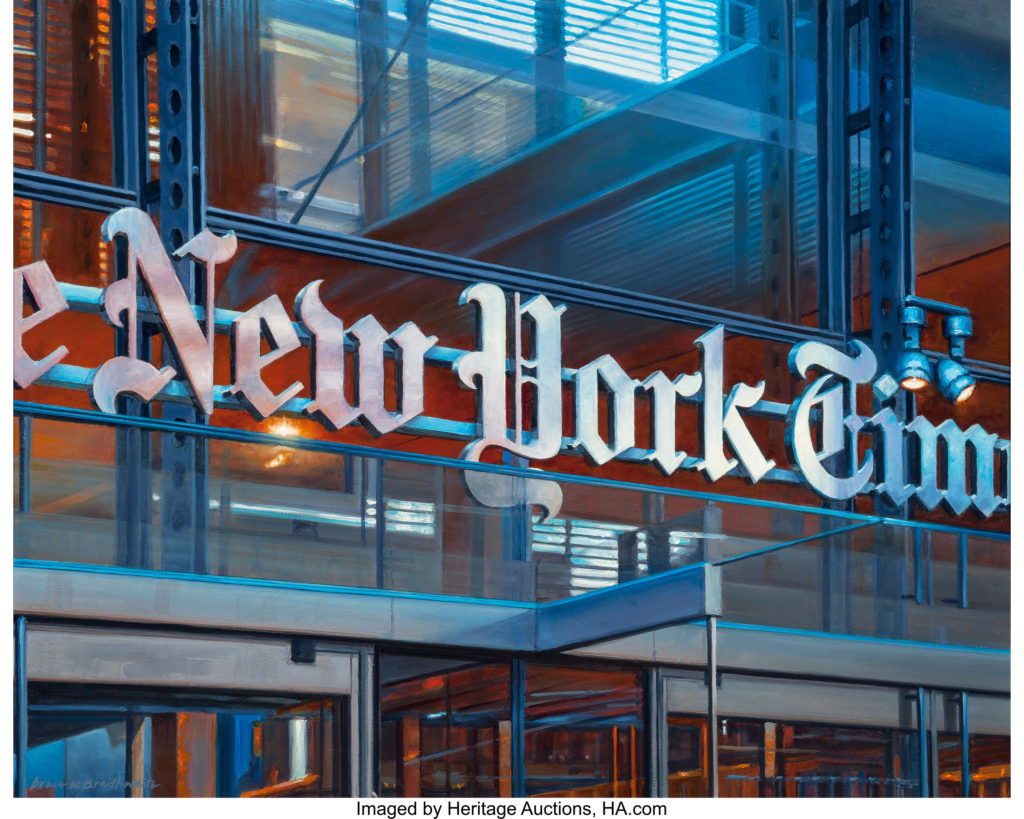
By Jim O’Neal
Ah, freedom of speech, of religion, of assembly – things we all associate with the centrality of our democracy. For me, freedom of the press is the key to an open mind and an open market, the twin foundations of a truly free society. In political philosophical terms and in government, it has been a distinctly American idea since the founding of our great nation.
Others have made claims of a similar nature, but rarely endure. The classic example is the Soviet Constitution of 1936 (the Stalin Constitution), which stressed the inclusion of “freedom of the press,” but the words were cheap imitations since the press was the handmaiden of the ruling Communist Party and merely echoed the party line with absolute fidelity. It was hailed at the time as a paragon of virtue unequalled in history but, ironically, on the very eve of the reign of brutality that started the following year.
Adolph Ochs bought the bankrupt New York Times for $75,000 in 1896 when he was 38 years old. The newspaper had $300,000 in unpaid bills and was losing on average a $1,000 a day. Ochs had a humble beginning, starting as a floor sweeper at 14 with the Knoxville Chronicle. He was a typesetter and reporter with the Louisville Courier Journal at age 18 and by 20 became the owner of the declining Chattanooga Times. He had plunked down $250 of the total sale of $5,750.
The New-York Daily Times had been founded by Henry Jarvis Raymond (1820-1869), who was also credited with being the “Godfather of the GOP” after his political actions in the elections of 1856 and 1860.
Moving quickly after his purchase of the NYT, Ochs repeated what he did with the Chattanooga publication – making it into a newspaper and not a gazette of opinion, or a showcase for star writers. He avoided being a champion for the underdog or top dog or a crusader for political or social reform. Ochs had something to sell – news – and he intended to sell it dispassionately and with the guarantee that it was reliable, verifiable and not deviously insipid.
He eliminated installments of romantic fiction that earlier management believed would lure readers and eschewed scandalous stories based on gossip. Instead, he expanded coverage of financial news, business trends, real estate transactions, and the official activities of government that other newspapers had long ignored. He wanted a paper of record, one that each day would publish a record of every fire in NYC, the arrival of every mail ship, the names of every official visitor to the White House, the precise moment the sun set and the moon rose. His unbending objective was to be impartial and complete – and “not soil the breakfast linen.”
Throughout his publishing career, he made brilliant business decisions – his genius had not only been in the type of newspaper he created, but that he had made such a newspaper profitable. And on the occasion of his 75th birthday in 1933, he issued an optimistic public statement in the midst of the Great Depression in which he asserted that “we are sobering up and painfully getting our house in order. The tragic experience we are having will result in educating the people that care, caution and conservatism are as necessary in economics as in physical health and that the Ten Commandments and the Sermon on the Mount cannot be ignored, nor forgotten. They should continue to be our guide to a philosophy of life.”
The New York Times motto of “All the News That’s Fit to Print” has been reviewed for relevance several times and always decided in the affirmative. It’s proudly printed on the upper left-hand section of the front page every day. I wonder if anyone is still aware of its existence?
 Intelligent Collector blogger JIM O’NEAL is an avid collector and history buff. He is president and CEO of Frito-Lay International [retired] and earlier served as chair and CEO of PepsiCo Restaurants International [KFC Pizza Hut and Taco Bell].
Intelligent Collector blogger JIM O’NEAL is an avid collector and history buff. He is president and CEO of Frito-Lay International [retired] and earlier served as chair and CEO of PepsiCo Restaurants International [KFC Pizza Hut and Taco Bell].
